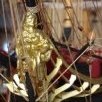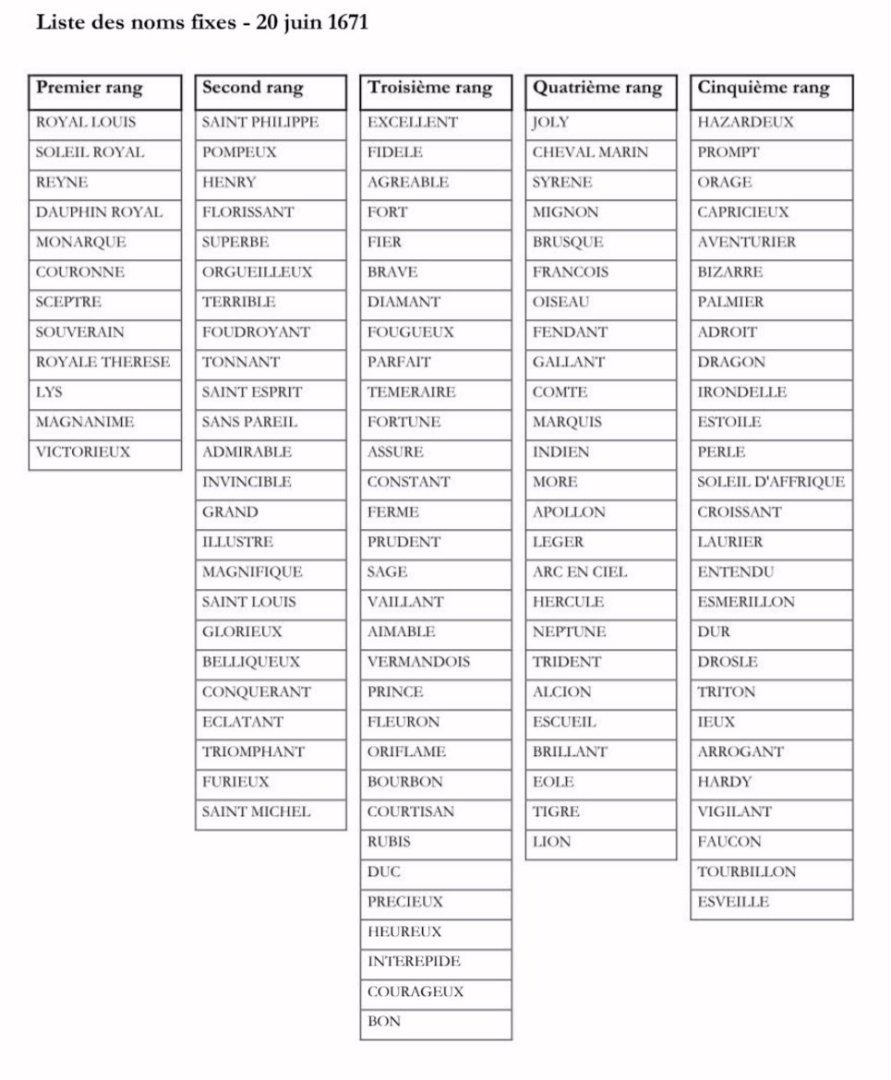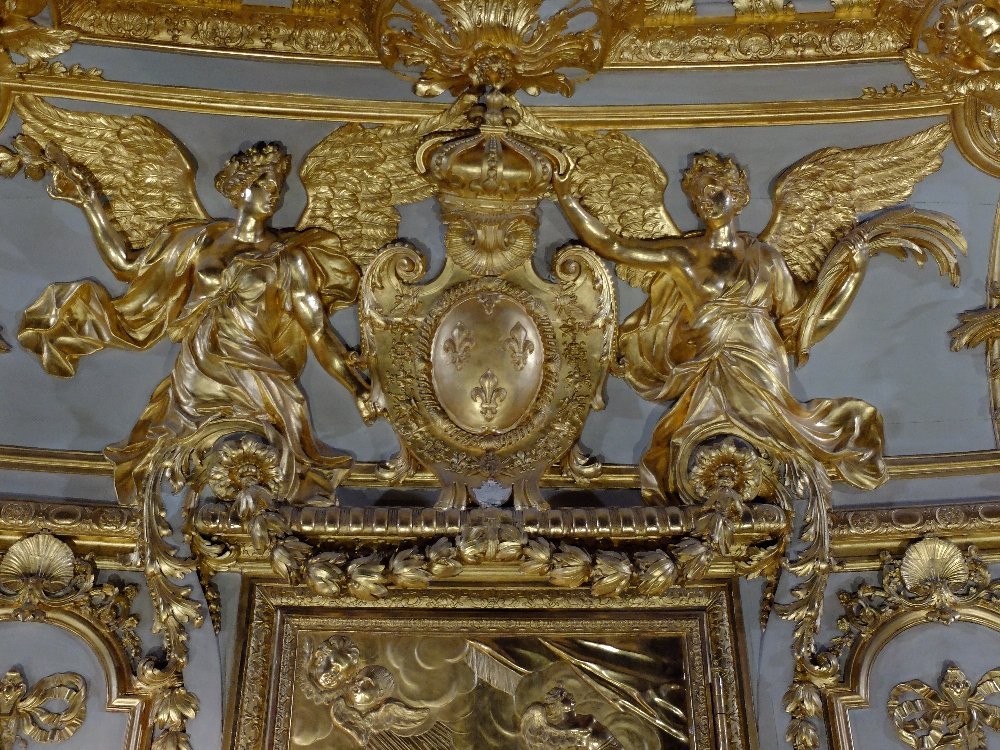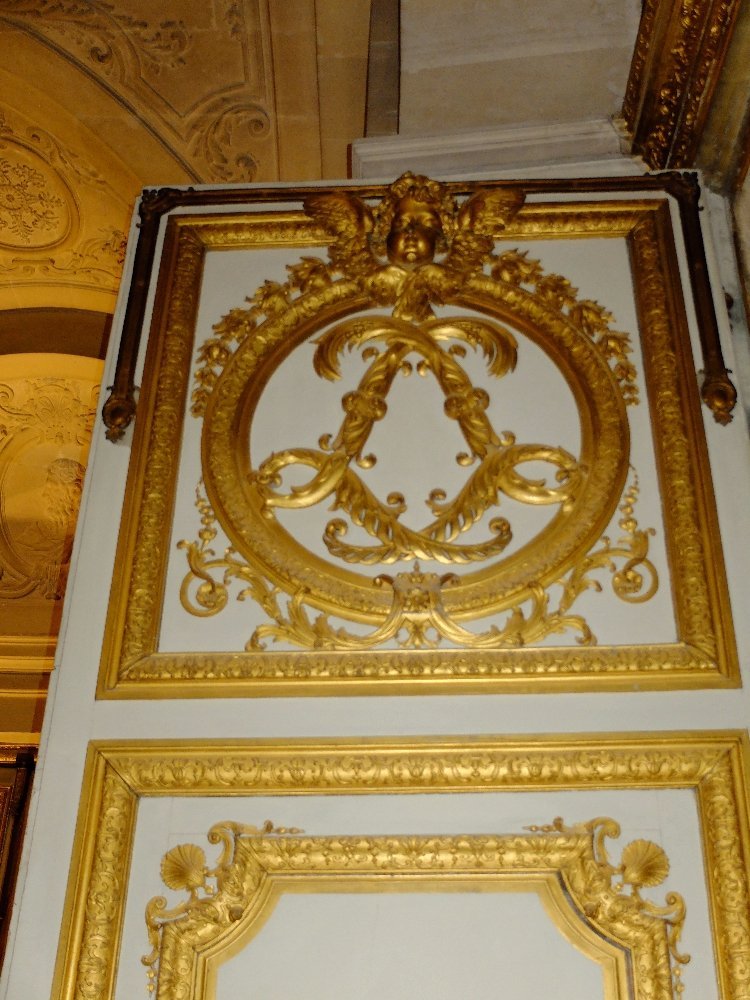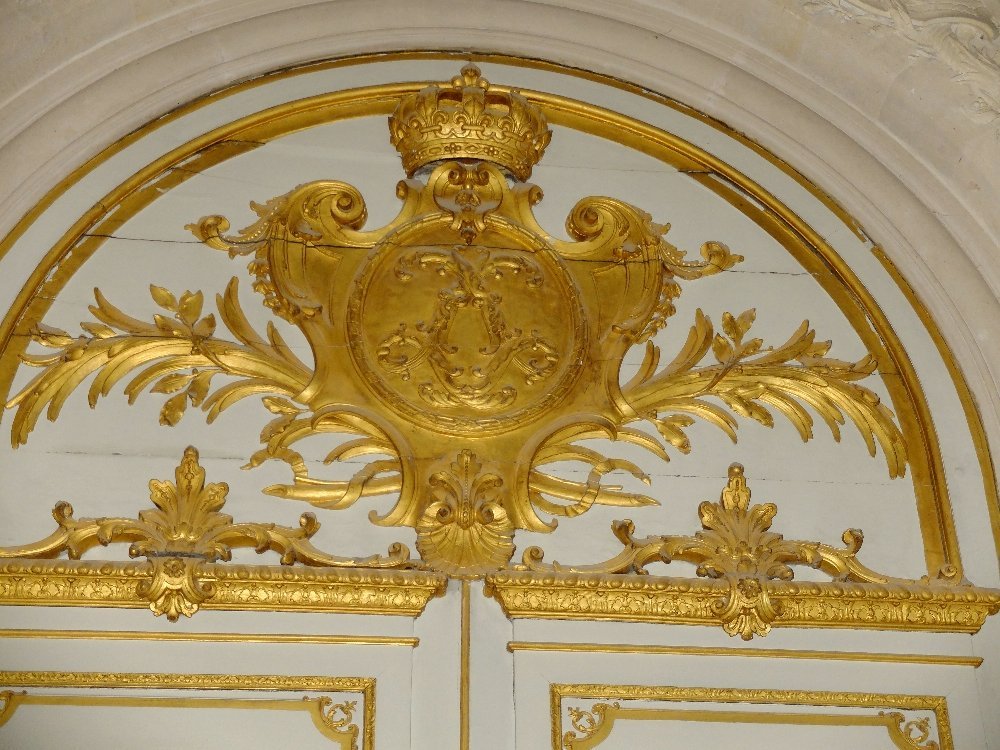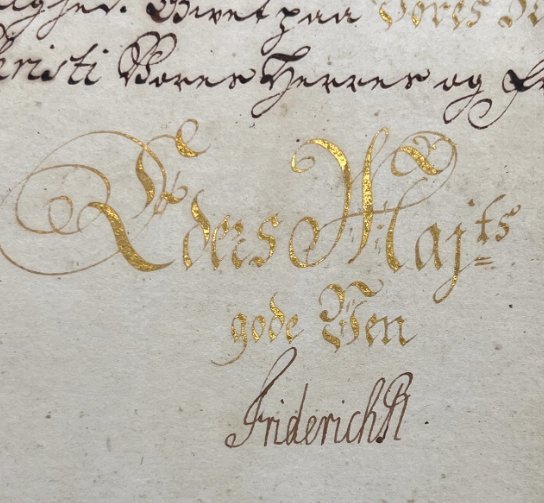-
Posts
53 -
Joined
-
Last visited
Profile Information
-
Gender
Male
-
Location
Versailles
-
Interests
modélisme (wood model-ship building et horlogerie (XIX th century pocket watch chronograph restauration)
Recent Profile Visitors
The recent visitors block is disabled and is not being shown to other users.
-
 empathry reacted to a post in a topic:
Carving from Belgorod
empathry reacted to a post in a topic:
Carving from Belgorod
-
 mtaylor reacted to a post in a topic:
Unicorn by José Moro - from the Tintin books
mtaylor reacted to a post in a topic:
Unicorn by José Moro - from the Tintin books
-
 mtaylor reacted to a post in a topic:
Carving from Belgorod
mtaylor reacted to a post in a topic:
Carving from Belgorod
-
 HAIIAPHNK reacted to a post in a topic:
Carving from Belgorod
HAIIAPHNK reacted to a post in a topic:
Carving from Belgorod
-
... and in such a case, why not set the entire ship model on fire and analyse the wave lenght(s) emitted by its raw products through a spectrometer ? The customs would get from its ashes all the requested (legal) answers ! Are we turning to Ray Bradbury Farenheit 451 ? Will books be burnt ? Will art be burnt ? We'll ourselves be burnt and euthanized (... obviously for "our" security) in order to fertilize this planet ?
-
 empathry reacted to a post in a topic:
Carving from Belgorod
empathry reacted to a post in a topic:
Carving from Belgorod
-
 empathry reacted to a post in a topic:
Carving from Belgorod
empathry reacted to a post in a topic:
Carving from Belgorod
-
 empathry reacted to a post in a topic:
Carving from Belgorod
empathry reacted to a post in a topic:
Carving from Belgorod
-
 empathry reacted to a post in a topic:
Carving from Belgorod
empathry reacted to a post in a topic:
Carving from Belgorod
-
 empathry reacted to a post in a topic:
Carving from Belgorod
empathry reacted to a post in a topic:
Carving from Belgorod
-
 Hubac's Historian reacted to a post in a topic:
Carving from Belgorod
Hubac's Historian reacted to a post in a topic:
Carving from Belgorod
-
 Hubac's Historian reacted to a post in a topic:
Carving from Belgorod
Hubac's Historian reacted to a post in a topic:
Carving from Belgorod
-
 empathry reacted to a post in a topic:
L'Ambitieux by Jorge_Goncalves - De Agostini - 1:59
empathry reacted to a post in a topic:
L'Ambitieux by Jorge_Goncalves - De Agostini - 1:59
-
 mtaylor reacted to a post in a topic:
French FULMINANT rear castle
mtaylor reacted to a post in a topic:
French FULMINANT rear castle
-
 mtaylor reacted to a post in a topic:
French FULMINANT rear castle
mtaylor reacted to a post in a topic:
French FULMINANT rear castle
-
 mtaylor reacted to a post in a topic:
French FULMINANT rear castle
mtaylor reacted to a post in a topic:
French FULMINANT rear castle
-
 mtaylor reacted to a post in a topic:
French FULMINANT rear castle
mtaylor reacted to a post in a topic:
French FULMINANT rear castle
-
 mtaylor reacted to a post in a topic:
French FULMINANT rear castle
mtaylor reacted to a post in a topic:
French FULMINANT rear castle
-
 empathry reacted to a post in a topic:
HMS Winchelsea 1764 by glbarlow - 1:48
empathry reacted to a post in a topic:
HMS Winchelsea 1764 by glbarlow - 1:48
-
 empathry reacted to a post in a topic:
Carving from Belgorod
empathry reacted to a post in a topic:
Carving from Belgorod
-
Hello Aleksandr, you are right and I am right too ! When I wrote that French copied Dutch, it is mostly concerning the technical (naval) point of view, being understood that Dutch vessels had a smaller draught that French ones, due to the fact that French used mostly iron studs in their construction (heavier) whilst Dutch used wooden studs (which do not rust). Dutch vessels were more maneuverable whilst French resisted betterly to gun fire. As for the decorations themselves (the artistic point of view), overdecorating a vessel for the King's advantageous dominance showing started by the English, and was followed by the other Navys (including France). It's extremely tricky to find out what exactly specific decoration is corresponding to such vessel, as vessels often are identically named. We know about Ambitieux I (1691) and Ambitieux II (1692). Something important to point out is the june 1671 royal list of "fixed names". In 1671, the "Royale" has 120 vessels and Louis XIV ordered that their names all be standardized. Hereunder is enclosed the "fixed names" list of all "authorized" names to be used for the King's vessels. Doing this was clever, as if a vessel was sunken or lost (like Ambitieux I), he was immediately remplaced by another one, Ambitieux II, bearing the same name, so that the vessel's name was always kept alive. = = = = << Mémoire du Roy au Sieur de Seuil Il verra par la liste et la lettre de sa Majesté cy jointes la résolution qu'elle a prise de donner des noms fixes à tous ses vaisseaux de guerre, frégates légères, flutes et brûlots de l'arsenal de Brest en changeant les anciens noms qu'ils avoient en d'autres qu'elle veut qu'ils ne changent jamais. C'est-à-dire que lorsqu'un vaisseau ne sera plus en estat de servir, il en sera baty un autre en sa place qui sera appelé du mesme nom. Et comme sa Majesté a à présent le nombre de vingt-six vaisseaux de guerre qu'Elle veut estre pareillement fixe, elle ne désire plus en faire bastir qu'à mesure qu'il y en aura quelqu'un qui ne sera plus en estat de servir. Le dit Sieur de Seuil observera cet ordre à l'advenir pour le nombre de ses vaisseaux qui sont à Brest. le 21 juin 1671 >> << Memorandum from the King to Sieur de Seuil He will see from the enclosed list and letter of His Majesty's resolution to give fixed names to all her warships, light frigates, flutes and fireboats in the Brest arsenal, changing the former names that they had into others that she wishes them never to change. This means that when a vessel is no longer fit for service, another will be built in its place, which will be called by the same name. And as His Majesty currently has the number of twenty six warships that She wishes to be similarly fixed, She no longer wishes to have any built until such time as there is one that will no longer be in a condition to serve. The aforementioned Sieur de Seuil will observe this order for the number of his vessels in Brest. Dated June 21st 1671 >> This letter from the King to the Intendant of Brest is attached to the list of names attributed to the units of his fleet attached to the port of Brest. In it, Louis XIV explains what is at stake with this list : that these new names "never change". He goes on to explain how this is to be achieved. The names must survive the ships through a system of everlasting relays. For each ship is attributed a name corresponding to its rank. Exactly twenty six vessels (no more, no less) are now attributed to the port of Brest. = = = = The Persian king Darius I (480 b.c.) used this same stratageme with his elite troops named "Immortels" which were (as per Herodote) 10.000 soldiers. When an Immortel dies in combat, he is immediately remplaced by another one. Surprisingly, there are none FULMINANT nor AMBITIEUX on this fixed names list !
-
Le Foudroyant is dated 1724, and as Magali Théron thesis deals mainly with figureheads (and not particularly transoms), so we are quite ascertained that Jupiter's, has been used as a figurehead the first time for the Fulminant (1692). As for the Pompeux, it's indicated that Jupiter with the "visage triste" was part of a decoration with other deities (upon the transom). The Pompeux is a 2nd rank vessel named "Madame" in 1670 ... then baptized anew "Pompeux" in 1671.
-
The historic reality is that French copied danish ships (by sending official ambassadors like Jean-Baptiste Antoine Colbert, Marquis de Seigneley. On the death of his father Colbert in 1683, Seignelay was named Navy Secretary by Louis XIV and held the post until his (sudden) death. Seignelay continued his father's work of expanding the "Royale". From 1660 to 1690, the "Royale" increased under Colbert(s) control from 18 sailing vessels to 125. Whilst arsenals too were reconstructed, modern historians criticise the Colberts (father and son), for concentrating on ships rather than infrastructure. = = = = The three attached images hereunder are from the "Chapelle Royale" in Versailles, showing a héraldry with the 3 lilies when representing France, and two interleaved "L's" when representing Louis (the King's first name) as a person. = Here is a sample of Frederich V signature ; you can read "FriderichR" which in latin means : Friderich REX (King).
-
 empathry reacted to a post in a topic:
French FULMINANT rear castle
empathry reacted to a post in a topic:
French FULMINANT rear castle
-
The decoration of king’s vessels during XVII th century is obviously linked to important political events that I will try to summarize : The French / Dutch War [1672 – 1678] : Due to incessant quarrels between the French and Dutch concerning customs duties, Louis XIV sends (on a pure political point of view, very cleverly) his sister-in-law to London to negotiate (bribe N° 1) with her brother the king Charles II. In return for an annual pension of three million pounds, Charles II promises to help France. In 1670, in preparation for an impending war with the Dutch, Colbert officially orders a reduction in the decorations upon all the « Royale » vessels. In 1671, another French ambassador is sent to Sweden to negotiate a treaty with the Swedish king, and Louis XIV obtains the neutrality of Emperor Leopold I … against an annual pension of 600,000 ecus (bribe N° 2). In 1672, Charles II of England declares war to the United Provinces, and Louis XIV follows immediately (business is business) ! At sea, on June, the Franco-English alliance is defeated by Admiral de Ruyter's Dutch fleet at the Battle of Solebay, saving his country from a sea invasion. In 1673, Admiral de Ruyter defeats again the Franco-English fleet at Walcheren (June), then at the Battle of Texel (August). In 1676, in the Mediterranean, Duquesne attacks the Dutch fleet, which had come to help the Spaniards, at Stromboli. Furthermore, at Agosta, he fights a combined Dutch-Spanish fleet ; Admiral de Ruyter is killed there. After a new naval battle, in Palermo, on June, the French control the western Mediterranean. In 1678, Louis XIV is now able to impose a positive treaty on the war ; this is the Peace of Nijmegen, signed on August 10. The Treaty of Nijmegen is the triumph of Louis XIV. Due to the huge naval losses supported by the « Royale », starts the largest amount of budget, from 1690 to 1694, ever historically allowed for the fleet reconstruction policy. The historians call explicitedly this period : « the 2nd Louis XIV Royale ». Fulminant and Orgueilleux I, both launched on december 1691, are exactly from this period and whilst it is probable that it took only 6 months to re-build Orgueilleux II (further Barfleur French defeat), we know that since 1670, decorations were reduced by a Colbert ordonnance, it’s certain that (answering Alexandr question) vessels were starting to be standardized. In 1715, Louis XIV deceases and Louis XV is the new king. The new « Royale » gradually develops a new type of ship of the second rank, carrying seventy-four guns. The armament (initially consisting of 26 pieces of 36 pounds, 28 of 18, 16 of 8 and 4 of 4 pounds), is definitively fixed from the Terrible in 1739, to 28 pieces of 36, 30 of 18 and 16 of 8. Those famous 74 gun-ships (very well described in Boudriot’s monography) are no more decorated, as they were before during Louis XIV reign, but they are becoming true « sister ships ». = = = = Some humoristic considerations about bribes N° 1 and N° 2 who had been allowed to English and Swedish kings in order to make them betray their old alliances with Dutch people … is that just like for the courtiers of Louis XIV ; the king allowed either « privileges » … either bribes. I have been (also) heard that after the Independance war, that English knew to grease the right palms (bribed) of American new government representatives, when it was a question of voting and making a linguistic choice, between the French language and the English language, for the newly constituted new American parliament. Aren’t they good politics ?
-
A (partial) conclusion ; we may be making ourselves (now, in our XXI th century) a fantasized and improved image of what the decorations of the ships of the XVII and XVIII th century could actually be. It could be that the reality is less aesthetic than we imagine, insofar as (with the notable exception of the Wasa), the only historical remains that are still visible are drawings (those of Berain in particular), or some paintings of naval battles. It is indicated in Magali Theron's thesis that the plans of the ships (at that time) were really very sketchy ... or even almost non-existent. Are not those beautiful arsenal models that we are currently building (in particular thanks to Boudriot's monographies), too, intellectual and aesthetic "ideal" visions that may be far from what was really constructed in the shipyards of the XVII and XVIII th century ? The philosophical question is : Do we not ourselves project our Art (and our XXI th century mindset), in some fantastic fantaisy ? and more deeply : Are Tintin and Snowy the real initiators of our hobby : arsenal model shipbuilding ? Would Boudriot have started working upon his monographies if he didn't read, younger, The secret of the Unicorn ?
-
Answering Druxey ; it's simply written on Magali's Theron thesis ... and it's her own interpretation, I just retranscript what she wrote. (visage triste is not really "sad face" ; should be more accurately translated by "not joyful face") Answering Alexandr ; we are coming to the most historically intriguing concern about those two vessels ; one with Jupiter (the Fulminant) and one with Apollo (the Ambitieux) and Alexander's is wondering himself (a) how many aesthetic and/or symbolic links are (or may be) existing between those two vessels, concerning their decoration and possibly (b) is he maybe imagining [this is an intellectual hypothesis] links and subleties which were not in the author's mind ? A possible answer is (implicitally) in the thesis whilst all these decorations have been drawn by Berain. We could think, naturally and logically, that Berain had smart decorative ideas into his head and making simultaneously the two sketches (the one for Fulminant and the one for Ambitieux), he would maybe try to coordinate them in order to raise a far superior aesthetic effect. I'll start with a little historical background, by pointing out that Berain was THE artist at the court of the King Louis XIV, responsible for designing the decorations on the King's vessels. He therefore had an official title (for this) and was paid for his work. It should also be remembered that, in the time of Louis XIV, everything was governed and organized around the "privileges" that the nobles arrogated to themselves, that the King distributed, and that most the intrigues of the court were aimed at receiving (from the King) said privileges. Once a noble receives and possesses such-and-such a privilege, he is guaranteed a good financial income. As it happens, Berain has the privilege of decorating the King's vessels ; he owns the official title (to exercise this function) and nobody will ever think of challenging him (probably during all his life). Berain works in his artist's Cabinet at Versailles, he is a wise man whilst taking a very scrupulous attention that the King will always be pleased with his work, while the King's image will be enhanced and magnified for posterity through his work ... the one of an always obedient and servile artist. What we learn from Magali Theron's thesis is that, during his entire life, Berain only visited a shipyard once. This means that the artist probably never saw a ship decorated on the basis of his sketches in his entire life ! What we learn from Magali Theron's thesis is that, from time to time, Berain's proposed decorations were (situated) below the waterline, meaning that Berain had no idea what shipbuilding was all about. There are numerous letters (from shipyards) complaining that Berain was designing things that were totally impractical. So here we have Monsieur Berain, with his "privilege" of being the artist in charge of decorating the King vessels, and who will not even have the (intellectual) curiosity, throughout all his life, to go and see how his drawings are sculpted (in the reality of a naval shipyard). This is lamentable, and psychologically, Berain certainly must have been a lousy civil servant, who surely didn't care too much about the practical applied results of his Art ; Berain's work is simply and solely drawing a sketch to please the King AND BYE-BYE : THEREAFTER, ALL IS OVER !!! The only thing that matters is to continue to please the King, to make all possible designs that flattered him, and to keep intact his "privilege". This is why, Alexandr, you should not brainstorm yourself into looking for symbolic or mythologic aesthetic explanations ... when there are none !
-
Answering you step by step Alexander : I have been two days ago to bibliotheque Serpente and started to read the Magali Theron (very important work) opus, concerning the decorations of Louis XIV "Royale" (<< La Royale >> is still the name given, even now, to the French Navy). There are several topics I will successively point out ... for not making a too large (or complicated) post. Let's start with mythology and the figureheads : The Fulminant's figurehead is Jupiter, and it's to be clearly understood that Jupiter is Roman, Jupiter is not symbolically the same than Zeus (who is Greek). Louis XIV ships decorations are to be described as neo-Roman, whilst the idea of Rome (for Louis XIV) has been an idea of power, military force and Empire. Louis XIV doesn't care with Greeks who are mostly philosophers, he cares (his royal trademark) only with Romans who are warriors. I have been carefully looking through Magali Theron opus if some vessels had already a figurehead representing Jupiter and it appears that not. Fulminant is definitively the first vessel with a Jupiter figurehead. Other vessels (afterwards) have had a Jupiter figurehead ; the Salamandre in 1753 and the Tonnerre in 1806. It's interesting to note that Salamandre is a mytic animal which was represented into the coat of arms of French king François the first (early XVI th century) ; the belief in the incombustibility of the salamander is spread throughout Christian Europe. In Christian symbolism, the salamander, associated with the allegory of the four elements, became an emblem of fire. As for the Tonnerre (to be translated in english by "Thunder") it's crystal clear that we are too, dealing with the "fire element", the same as "Fulminant". It's not surprising that a figurehead representing Jupiter could be associated with this fire element. Moreover in Magali Theron opus, there is a very short reference to another sculpted Jupiter, which participates in a composite decor including many Roman deities, upon the "Pompeux" (1707) ; it's described as being a Jupiter with a "visage triste". Another answer to you Alexander concerning the two sister-ships Ambitieux I (H. Malet - 1691) and Fulminant (P. Masson - 1691) : YES, they are technically engineered into a same dimensions and gun capacity, but NO, the drawings by Jean Berain are totally independent. I suppose that king Louis XIV was proposed names for such 1st rank vessel to be constructed, he choose (step 1) Ambitieux and Fulminant, which are two adjectives in the french language, and (step 2) thereafter, Jean Berain is asked to draw something linked with those two adjectives Ambitieux and Fulminant, and (step 3) the drawings are sent to Rochefort, for being sculpted and painted. Moreover, the naval chief engineers in charge of the two vessels (H. Malet and P. Masson) are two different persons, so that the two vessels will be considered as "sister ships", only by their size and the equal number of guns they are able to bear. One important (and factual) point is that Rochefort [and Dunkerque and Le Havre shipyards too] naval archives have been mostly lost (or burnt ... etc) ; so, Boudriot made a monography which is supposed to be (more or less because Boudriot hasn't practically got many information from those missing or burnt archives) the Ambitieux II, dated 1692, whose naval chief engineer was G. Guichard. In conclusion, and due to the missing Rochefort archives ; (a) Nobody will never really know how Ambitieux I could have been somehow similar or different from Ambitieux II whilst their naval chief engineers were two different persons ; (b) Nobody will never really know how Ambitieux I could have been somehow similar or different from Fulminant ; (c) about Fulminant, the sole and only one vestige left are the three Berain drawings ; those drawings are originals and cannot be contested or interpreted (this is for sure the extra good new) ! In fine : I had previously assumed that, taking into account the date of the battle of Barfleur, it took only 6 months to the Rochefort naval shipyard to build the Ambitieux II ; then I will assume (logically) that building a 1st rank ship in a so short delay needs a great amount of uniformization and standardization => then the three ships are necessarily EXTREMELY SIMILAR. => Yes indeed, a Fulminant shipmodel can be historically assumed and constructed by using Boudriot's monography + original Berain's drawings. Moreover, it seems (historically) logical to think that that Ambitieux indeed was the sister ship of Fulminant and not the contrary, due to the precedence of their respective figureheads. Jupiter prevails always (symbolically) upon Apollo !!! No doubt to have about this !!!
-
Hello Sasha, how pleasant it is to discover that the deep meaning of your nickname is "Partner" ... because as for my nickname here (Empathry), it's a pun word meaning "try empathy", so that I try to act (generally speaking in my life) with empathy ! As for the correct meaning of being "swallowen - eaten" by something, it means that the piano keyboard is of a very difficult use and needs years training, exercises and sweat ; the same (this was my analogy) with your skill in micro-sculpture ; it needs years of practice to masterize and once you've got the good level (in piano or in micro-sculpture), you are starting "freeing" yourself from the technical difficulties and then, your work (on piano or on micro-sculpture) is free and looks so easy ... so that you can start to have philosophical and spiritual concerns about what you are doing. At the end of the (long) training process, the mind gets free and is then able to elevate. It's sure that modeling, as a passion, is a "school" for life, for perseverance. Then this "school" makes you (all of us) happy !
-
Hi ! I have read some info about Padauk wood, whilst being described as : << a little Heartwood color can vary, ranging from a pale pinkish orange to a deep brownish red. Most pieces tend to start a vibrant reddish orange when freshly cut, darkening substantially over time to a reddish/purplish brown (some lighter-colored pieces can age to a grayish brown). UV-inhibiting finishes may prolong, but not prevent the gradual color-shift of this brightly colored wood. >> Maybe should you be aware to this gradual color-shift of your finished lion ; as it's finals aspect should perhaps not be keeping (in time) as per your expectations ? I am eagerly reading all your "Lion's adventures" and they make me thinking about this kind of analogy, as I am a more or less talented amateur piano player (maybe less than more) and also a more or less micro sculptor (surely less than more). When you play (amateur level) piano, the result may be roughly acceptable whilst you are (psychologically) completely "eaten" - "swallowen" by this fu**ing piano keyboard. The same for model ship sculptures, you may get acceptable results (after a lot of spent time and sweat) and you have to keep yourself happy with that. As for you HAIIAPHNK (I am curiously answering myself how to pronounce it correctly ... is there something like HAPPY hidden there, or should I read it within a cyrillic mood, or (my imagination) is "II" to be read "two" ... which would phonetically mean << HA two A >>, when translated HA two A which in French sounds "à toi" ? Your concerns about lions and sculpture are the ones of a man who has sufficient skill and experience for not being "eaten" - "swallowed" by the technical execution of the sculpture itself. Then you can have aesthetic and philosophic concerns about your sculpture work. You are not (only) keeping yourself happy of what you realized, you are able to completely disrupt your work and do it again if you find out a new (creative) way to proceed in order to have a better result. Then your final obtained result is bringing it's own perfection (whilst there are, philosophically speaking, various existing types of perfections), as you have put into your work not only your fingers and hand's skill, but also your mind and soul.
-
Hi ! Answering Hubac's Historian, it doesn't covers the same ground as it's 100 % completely oriented towards Pierre Puget. Moreover, I have discovered (today) something new and quite interesting, but it is in the French language. The name of this (other) thesis is : << La symbolique sur le vaisseau de guerre Français de 1661 à 1680 >> from Marie-Amélie PIN. There are not many images, but a lot of authentic letters exchanged between shipyards, Colbert, the King, the sculptors etc. https://www.calameo.com/books/0004132413ae8127b68ba You may open it free ("lire la publication") and translate it thereafter by using the "Google image translator". Upon pages 126 to 138 are an interesting table (the first time I see such a table) where are indicated (among other data) the former name of the vessel, and (years after) other further names, as the case may be. e.g. in feb. 1669 was a first rank vessel which was initially named "Ile de France" ... and was re-named "Lis" in june 1671 another vessel which was formerly named "Paris" in feb. 1669, has been re-named "Royale Thérèse" in june 1671. As for Ambitieux "I" (H. Malet) and Fulminant (P. Masson), both of them were launched on december 1691 in Rochefort. Ambitieux "I" was sunk and burnt in Barfleur and Ambitieux "II" (J. Guichard) was launched in december 1692, which means that (a) Fulminant is the real sister ship of Ambitieux "I" and (b) as Barfleur is dated 2 of june 1692, it took exactly 6 months to Rochefort to build the Ambitieux "II".
-
The author is Magali Theron, the thesis (written on paper) has never been scanned, is dated 2003, and is referenced under # BUT 5735, stored at Bibliothèque Serpente (which belongs to the Sorbonne Institute). It's summary is translated as follows : << It was from 1668 onwards, at Colbert's instigation, that the State took a real interest in ship decoration. The profusion and luxury of these painted and sculpted ornaments were intended to "radiate the magnificence" of the king on the sea, and to serve as propaganda. Colbert entrusted Charles le Brun with the task of designing the decorations for first-rank ships, so that he could develop new decorative systems. This involvement of the first painter gave rise to three sumptuous decors that marked the evolution of naval ornamentation in France, and led to the creation of painting and sculpture workshops in the arsenals, whose influence was ensured by the appointment of renowned artists such as Pierre Puget. By giving freedom of enterprise to artists from all horizons, the arsenals encouraged exchanges and became, at least until the end of the Regency, artistic hotbeds, where influences mingled. >>
-
Your curved profiles are really smart Haiiaphnk, they remember me the basics of geometry ! I am presently inquiring upon a thesis which name is " French king's vessels sculpted and painted ornaments, from 1660 to 1792 " and it appears that a paper sample is stored at the Sorbonne library in Paris. I'm not anymore a student and will need to find for a pass to go there and examine it !
About us
Modelshipworld - Advancing Ship Modeling through Research
SSL Secured
Your security is important for us so this Website is SSL-Secured
NRG Mailing Address
Nautical Research Guild
237 South Lincoln Street
Westmont IL, 60559-1917
Model Ship World ® and the MSW logo are Registered Trademarks, and belong to the Nautical Research Guild (United States Patent and Trademark Office: No. 6,929,264 & No. 6,929,274, registered Dec. 20, 2022)
Helpful Links
About the NRG
If you enjoy building ship models that are historically accurate as well as beautiful, then The Nautical Research Guild (NRG) is just right for you.
The Guild is a non-profit educational organization whose mission is to “Advance Ship Modeling Through Research”. We provide support to our members in their efforts to raise the quality of their model ships.
The Nautical Research Guild has published our world-renowned quarterly magazine, The Nautical Research Journal, since 1955. The pages of the Journal are full of articles by accomplished ship modelers who show you how they create those exquisite details on their models, and by maritime historians who show you the correct details to build. The Journal is available in both print and digital editions. Go to the NRG web site (www.thenrg.org) to download a complimentary digital copy of the Journal. The NRG also publishes plan sets, books and compilations of back issues of the Journal and the former Ships in Scale and Model Ship Builder magazines.

.jpg.65556b0835672286d25baa6354bb3560.jpg)
